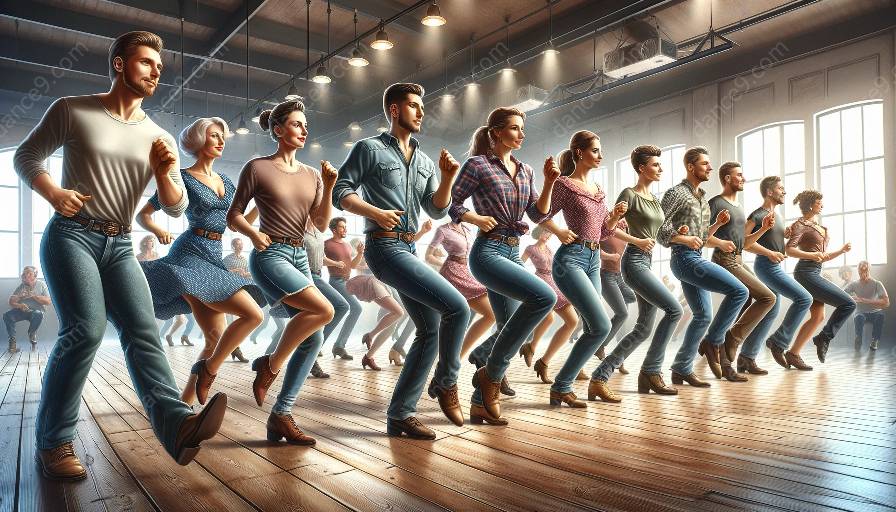Line dancing, a popular and energetic form of dance, has a rich history and has evolved significantly over the years. From its origins in traditional folk dances to its modern-day presence in dance classes and social events, the history and evolution of line dancing is a colorful and captivating story.
The Origins of Line Dancing
Line dancing has its roots in traditional folk dances from various cultures around the world. The concept of dancers forming lines and performing synchronized steps dates back centuries and can be seen in historical dances such as the contra dance in the United States, the Irish céilí dances, and the quadrille in France. These early forms of line dancing provided the foundation for the development of this dance style.
The Rise of Urban Line Dancing
While line dancing has deep traditional roots, it experienced a significant shift in the 1970s and 1980s when it gained popularity as a social dance form in urban settings. This era saw the emergence of line dances set to country music, disco, and other popular genres. Line dancing became a central part of social gatherings, clubs, and dance halls, providing people with a fun and accessible way to enjoy dancing in a group setting.
Integration into Modern Dance Classes
As line dancing continued to evolve, it found a place in modern dance classes and fitness programs. Dance instructors began incorporating line dance routines into their classes, recognizing the benefits of this style for improving coordination, cardiovascular health, and overall well-being. Line dancing also became a popular choice for individuals looking for a low-impact yet engaging form of exercise.
Pop-Culture Influence and Evolution
With its catchy rhythms and inclusive nature, line dancing found its way into popular culture through movies, television shows, and music videos. This exposure helped propel line dancing into the mainstream and contributed to its ongoing evolution. New line dances were constantly being created and shared, keeping the dance style fresh and relevant for audiences of all ages.
Cultural Significance
Line dancing has made a significant impact in various communities and has become an integral part of social events, celebrations, and gatherings. Its ability to bring people together on the dance floor and create a sense of unity has made it a cherished tradition in many cultures around the world.
The Future of Line Dancing
As line dancing continues to thrive, it remains a versatile and dynamic dance form. Its enduring popularity in dance classes and social settings ensures that it will remain an integral part of the dance world for years to come, evolving with the times and continuing to bring joy to dancers of all backgrounds.













































































